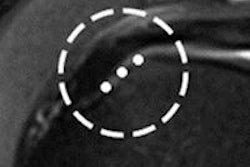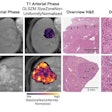Researchers at New York University and NYU Langone Medical Center have created a novel way to enhance MRI by reducing interference from large macromolecules that can often obscure images generated by current chemical exchange saturation transfer (CEST) methods.
Their research, published online April 23 in Scientific Reports, has the potential to improve MRI for cartilage and brain tissue.
The work is designed to advance a decade-old method known as chemical exchange that has been used to enhance MRI techniques. With this approach, scientists utilize the movement of atoms from their natural molecular structure to water in the body to enhance their visibility.
However, the efforts often are hindered by the presence of macromolecules, which obscure smaller molecules that help healthcare professionals assess patients' conditions.
"We have found a way to eliminate signals of certain molecules and thereby clean up the image of parts of the body that could be used by medical professionals in order to make diagnoses," said co-author Alexej Jerschow, a professor in NYU's department of chemistry, in a release about the study.



.fFmgij6Hin.png?auto=compress%2Cformat&fit=crop&h=100&q=70&w=100)




.fFmgij6Hin.png?auto=compress%2Cformat&fit=crop&h=167&q=70&w=250)











